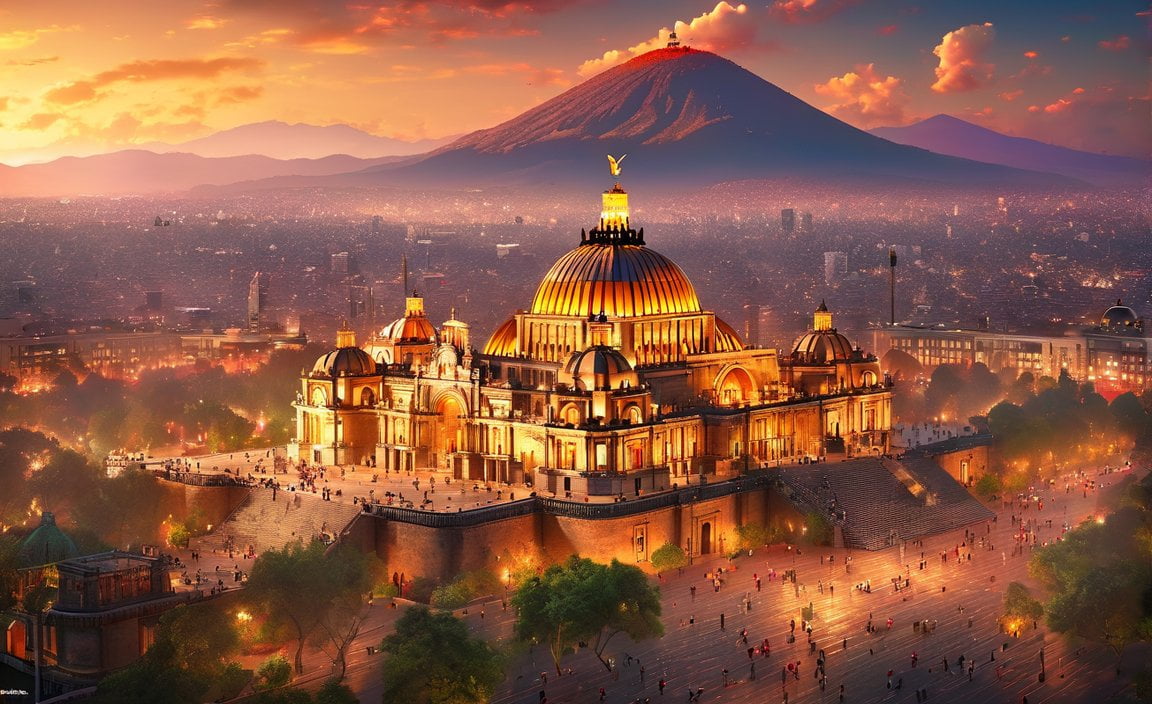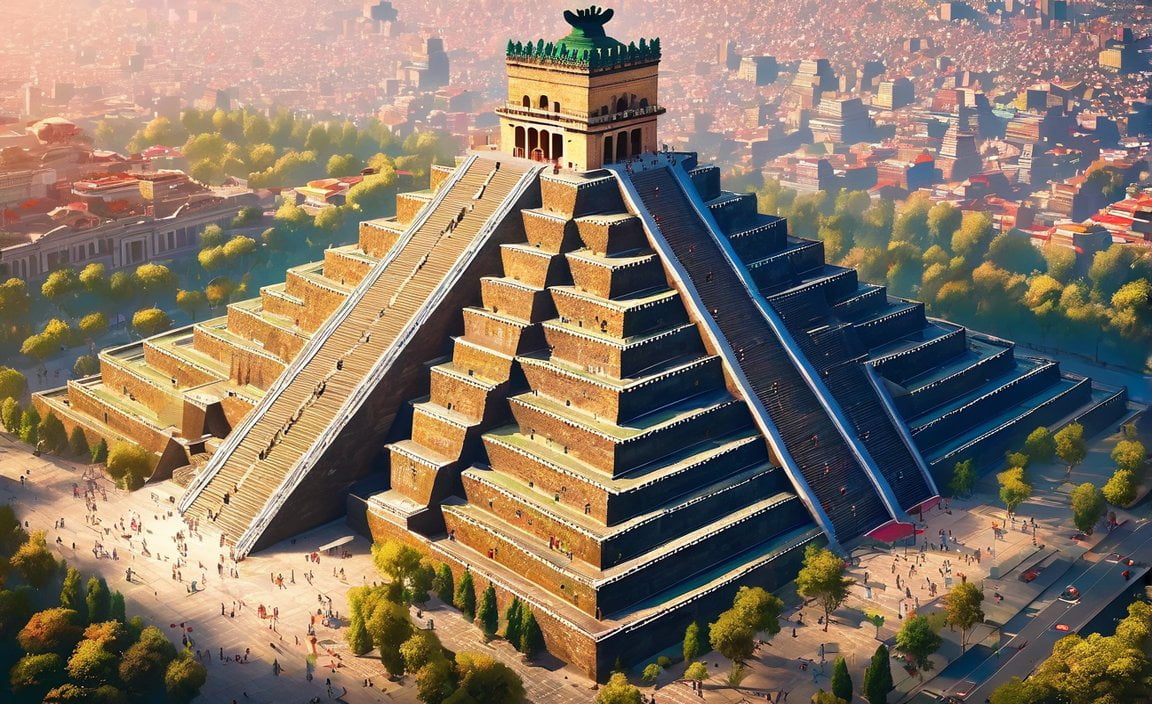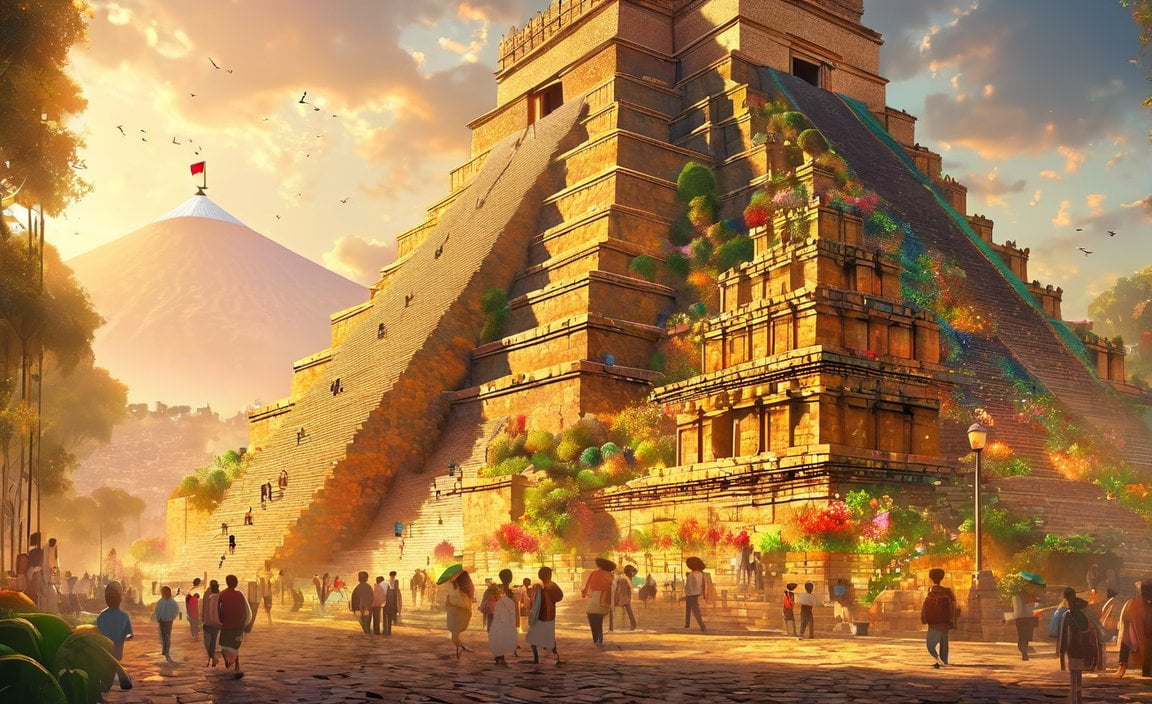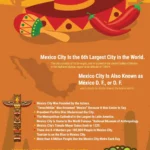Mexico City, a sprawling metropolis brimming with history, culture, and vibrant energy, is a captivating destination that has captivated travelers for centuries. Nestled amidst the highlands of central Mexico, this urban gem boasts a rich tapestry of experiences, from ancient ruins to modern marvels, that will leave you awestruck.
1. A Populous City with a Unique Linguistic Flair

Mexico City, with its population of over 21 million, is the fourth most populous city in the world, and it’s also home to the largest Spanish-speaking population on Earth. The city’s linguistic landscape is further enriched by the presence of over 30 indigenous languages spoken within its borders, a testament to the region’s cultural diversity.
2. A City Steeped in Ancient History
Mexico City stands on the ruins of Tenochtitlan, the once-glorious capital of the Aztec Empire. Founded in 1325, Tenochtitlan was a marvel of engineering and urban planning, built on an island in Lake Texcoco. The city’s layout, with its canals and chinampas (floating gardens), was a testament to the ingenuity of the Aztecs.
3. A City Coexisting with an Active Volcano
Mexico City’s geographical setting is as captivating as its history. The city sits in the shadow of Popocatépetl, an active volcano that towers over the metropolitan landscape. Popocatépetl, meaning “smoking mountain” in Nahuatl, has erupted numerous times throughout history, most recently in 2000.
4. A Taxi Haven for Urban Navigators
Mexico City is a haven for taxi enthusiasts, boasting over 140,000 yellow-and-white cabs. These ubiquitous taxis provide a convenient and affordable way to navigate the city’s bustling streets. Whether you’re heading to a historical landmark or a trendy restaurant, a taxi is always within reach.
5. A City with Green Spaces Galore

Despite its urban jungle status, Mexico City is surprisingly abundant in green spaces. Chapultepec Park, one of the largest city parks in the world, covers an impressive 686 hectares. This sprawling park offers a welcome respite from the city’s hustle and bustle, with its lush greenery, tranquil lakes, and cultural attractions.
Mexico City is a city that surprises and delights, a place where ancient wonders coexist with modern marvels, where bustling streets give way to tranquil parks, and where a rich history intertwines with a vibrant present. These five fascinating facts are just a glimpse into the many layers that make Mexico City a truly unforgettable destination.
- Explore 5 interesting facts about deciduous forests
- Discover 5 fascinating facts about Quebec
- Learn about 5 intriguing facts about the savanna
Feel free to use these links in your content to provide readers with more information on these topics.
FAQ
Q1: How populous is Mexico City?
A1: With over 21 million inhabitants, Mexico City is the fourth most populous city in the world, bustling with a vibrant energy that reflects its rich history and cultural tapestry.
Q2: What is the linguistic significance of Mexico City?
A2: Mexico City is home to the largest Spanish-speaking population on Earth, with over 21 million residents conversing in this melodious language. Additionally, the city boasts a diverse linguistic landscape, with over 30 indigenous languages spoken within its borders.
Q3: What ancient civilization thrived where Mexico City now stands?
A3: Mexico City stands on the ruins of Tenochtitlan, the once-glorious capital of the Aztec Empire. Founded in 1325, Tenochtitlan was a marvel of engineering and urban planning, built on an island in Lake Texcoco. The city’s ingenious layout, with its canals and chinampas (floating gardens), showcased the Aztecs’ architectural prowess.
Q4: How does Mexico City’s proximity to an active volcano impact its landscape?
A3: Mexico City’s geographical setting is as captivating as its history. The city sits in the shadow of Popocatépetl, an active volcano that majestically towers over the metropolitan landscape. Popocatépetl, meaning “smoking mountain” in Nahuatl, has erupted numerous times throughout history, adding an element of intrigue and natural wonder to the city’s surroundings.
Q5: What is Chapultepec Park and how does it contribute to Mexico City’s green spaces?
A5: Despite its urban jungle status, Mexico City is surprisingly abundant in green spaces. Chapultepec Park, one of the largest city parks in the world, covers an impressive 686 hectares. This sprawling park offers a welcome respite from the city’s hustle and bustle, with its lush greenery, tranquil lakes, and cultural attractions, providing a harmonious blend of urban vibrancy and natural tranquility.
- Escape Ireland’s Crowded Spots: Discover the Hidden Countryside Now - March 28, 2025
- Unveiling Oklahoma’s Flag: History & Symbolism - March 28, 2025
- Explore Arkansas Map: Cities, Towns, Rivers & Mountains Now - March 28, 2025
















